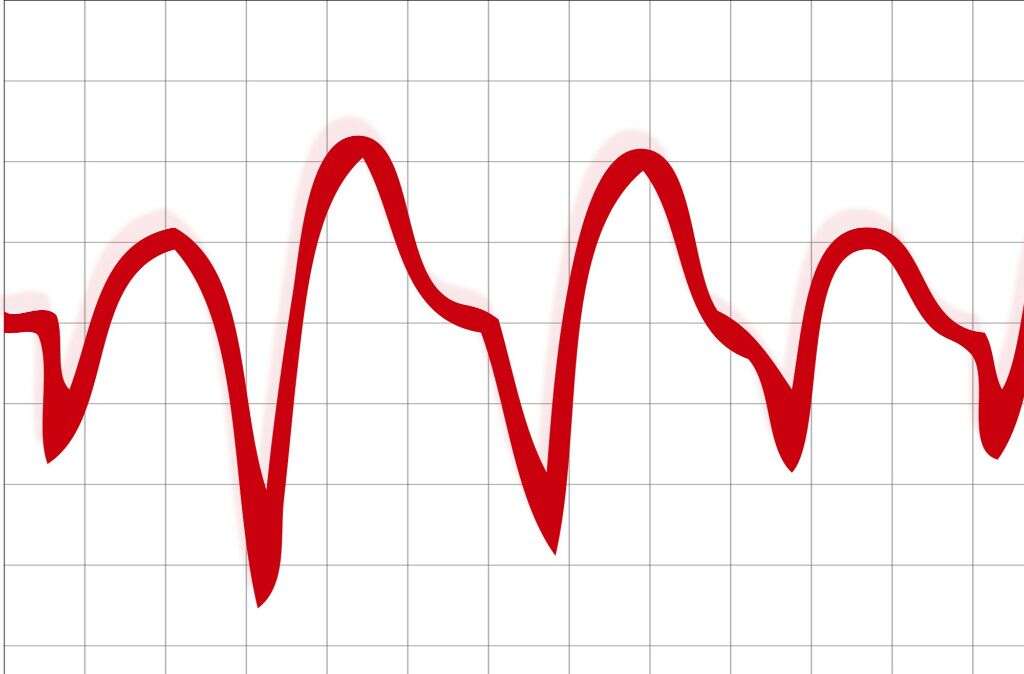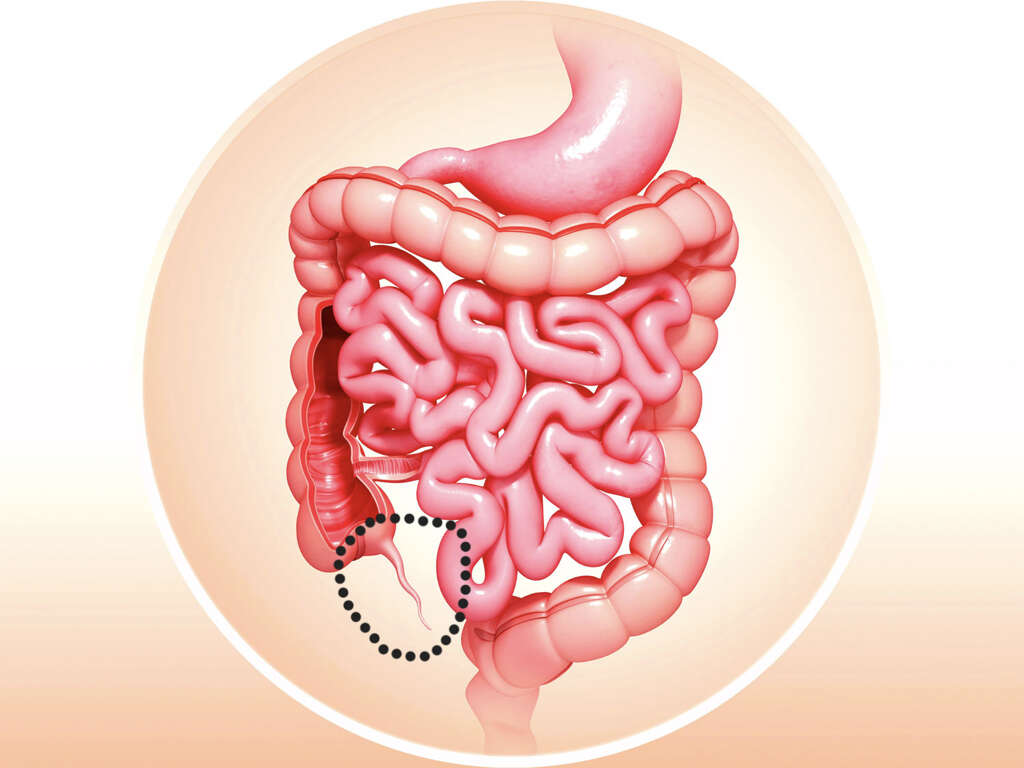10 Ruptured Appendix Symptoms
The appendix is a tube-like structure that is connected to the cecum. The cecum is a structure located at the junction of the small and large intestines. Some experts think that the appendix is a vestigial organ, which means that it is an organ that has lost most of its original function due to evolution. The human appendix length ranges from 5 to 35 cm. With a diameter of 6 mm, anything more than 6 mm would be considered inflamed and thickened. In most cases, the appendix is located at the lower-right quadrant of the abdomen with the base 2 cm beneath the ileocecal valve. On the surface, its position corresponds to McBurney’s point.
Appendicitis occurs when there is inflammation of the appendix caused by a blockage in the hollow portion of the appendix. Some causes of blockage include calcified stones from feces, inflamed lymphoid tissue, tumors, and parasites. When blockage occurs, there is increased pressure in the appendix, resulting in decreased blood flow and increased bacterial growth. While the diagnosis of appendicitis is largely based on the individual’s signs and symptoms, other tests such as medical imaging and laboratory tests can also be helpful. Appendicitis is one of the commonest causes of severe abdominal pain that has a rapid onset. In 2015, there were an estimated 11.6 million cases of appendicitis, which led to about 50,000 deaths.
The approximate interval between the start of symptoms until rupture of the appendix ranges from 36 to 72 hours. The severity of rupture varies depending on the size. Some may have a small spillage into the abdominal cavity while others may have a big rupture where there is pus and stool in the abdomen. When rupture occurs, the bacteria enters the abdominal cavity and causes inflammation in the intraabdominal cavity, known as peritonitis. Treatment includes the removal of the ruptured appendix via surgery. The abdominal cavity will need to be cleaned to minimize bacteria. Antibiotics will be administered to ensure that the infection has resolved. Pain can be managed using prescription pain medicine.
Symptom #1: Abdominal Pain
When there is a ruptured appendix, there can be severe abdominal pain that is exacerbated by movement such as sneezing and coughing. While appendicitis is mainly felt in the lower-right quadrant, a ruptured appendicitis would involve the entire abdomen. Other associated symptoms would be rigidity of the abdomen along with abdominal guarding (tensing of the abdominal muscles).
There can also be abdominal tenderness where pain is elicited by pressing on the abdomen. A ruptured appendix is considered a medical emergency and immediate medical attention is necessary.
Symptom #2: Fever
Fever, or pyrexia, occurs when the body’s temperature set point is above the normal range. This increase causes a feeling of coldness known as chills and increased muscle contractions. This leads to greater heat production and conservation. A fever can be due to various medical conditions such as infections (bacterial, viral, parasitic, fungal), appendicitis, cancer, and deep vein thrombosis.
While a low-grade fever may be a common symptom among those with appendicitis, when there is a ruptured appendix, the spillage of gastrointestinal contents into the abdominal cavity results in peritonitis and can lead to higher grade fever.

Symptom #3: Dyspnea and Tachypnea
Shortness of breath, or dyspnea, refers to the feeling where one is unable to breathe well enough. This means the affected individual feels that more effort is required to breathe, resulting in air hunger and chest tightness. Most causes of dyspnea are cardiovascular or respiratory related causes such as pneumonia, asthma, interstitial lung disease, cardiac ischemia, chronic obstructive pulmonary disease, and anxiety.
Tachypnea is a term that describes rapid breathing. In human adults, the normal respiratory rate falls between 12 to 20 breaths per minute. Both dyspnea and tachypnea may be seen in patients with a ruptured appendix due to shock seen in peritonitis.
Symptom #4: Sinus Tachycardia
Sinus tachycardia refers to an elevated rate of heartbeat, despite having a sinus rhythm. Tachycardia is defined as having a rate of more than 100 beats per minute. Individuals with sinus tachycardia have little to no symptoms but when the rate becomes too high, the cardiac output decreases and can result in dizziness and breathlessness.
Some causes of sinus tachycardia include pain, fever, anxiety, dehydration, anemia, heart failure, hyperthyroidism, sepsis, and hypoxia. In a ruptured appendicitis, sinus tachycardia can be attributed to the pain, fever, and possible sepsis due to the spillage of gastrointestinal contents into the abdominal cavity.

Symptom #5: Weakness
Weakness is a common and nonspecific symptom that can be seen in various conditions. Weakness can be divided into true or perceived weakness. In true weakness, there is an underlying condition that causes a weakness in the muscles or connective tissue. Examples include muscular dystrophy and neuromuscular junction disorders. In perceived weakness, the muscle strength remains normal but the individual feels that more effort is required to exert force. This can be seen in conditions such as chronic fatigue syndrome.
In a ruptured appendix, weakness can be due to the sepsis caused by peritonitis. This can lead to shock where there is also low blood pressure resulting in dizziness and weakness.
Symptom #6: Confusion or Delirium
Delirium or acute confusional state is a decline from a previously normal level of mental function due to an organic cause. This usually occurs over a short period of time ranging from hours to days. Delirium comprises changes in consciousness, cognition, and attention. There may also be other neurological deficits such as emotional disturbances, hallucinations, and changes in the sleep-wake cycle.
Delirium may occur due to an underlying disease process such as hypoxia, infection, side effects of medication, malnutrition, and sepsis. Delirium can occur in a ruptured appendix, especially when there is peritonitis and septic shock occurs due to the progress of the infection.

Symptom #7: Hypotension
Hypotension, or low blood pressure, occurs when the systolic blood pressure is less than 90 mmHg or when the diastolic blood pressure is less than 60 mmHg. Blood pressure refers to the force of blood pushing against the arteries.
Clinically, hypotension is only significant if there are noticeable symptoms such as breathlessness, dizziness, fainting, chest pain, and headache. Some causes of hypotension include hormonal changes, anemia, use of diuretics, hypovolemia, and heart failure. In a ruptured appendix, hypotension occurs due to peritonitis and shock.
Symptom #8: Nausea
Nausea is an unpleasant sensation where there is an urge to vomit. Although painless, it can be a debilitating symptom as it places discomfort on the upper abdomen, chest, and back of the throat. It is a nonspecific symptom and can be caused by various issues such as motion sickness, food poisoning, gastroenteritis, migraine, hypoglycemia, anxiety, depression, disgust, and pregnancy.
Antiemetics are medications that can be prescribed to help control nausea. Some commonly prescribed antiemetics include ondansetron, metoclopramide, and promethazine. Nausea is a common symptom among patients with appendicitis with an estimated 60–90 percent of patients experiencing nausea.

Symptom #9: Vomiting
Vomiting, puking, or throwing up is the act where there is involuntary expulsion of stomach contents through the mouth and, occasionally, the nose. It can be due to gastritis, poisoning, motion sickness, traumatic brain injury, chemotherapy, and side effects of medications.
Vomiting may or may not be preceded by nausea. Vomiting is a common symptom seen among patients with appendicitis. It almost always follows the onset of pain and suggests that there may be underlying obstruction. Severe pain can also contribute to nausea and vomiting.
Symptom #10: Inability to Pass Stools or Gas
In a ruptured appendix, there can be ileus paralyticus where there is disruption of the normal abilities of the intestines. This means that there may be an inability to pass stools or gas, resulting in abdominal bloating. This can be problematic as it can contribute to more nausea, vomiting, and abdominal pain.
Ileus paralyticus occurs in a ruptured appendix as the inflammation and irritation in the abdominal cavity causes disruption of normal functions. Other causes include bowel obstruction, acute pancreatitis, gastrointestinal surgery, spinal surgery, diabetes, hypothyroidism, and electrolyte imbalance.








